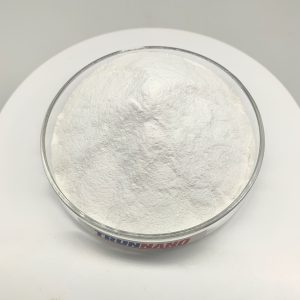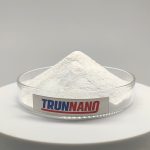Professional solutions on concrete addtives, Concrete Foaming Agent, Superplasticizer, CLC Blocks Additives, and foaming machine
PRODUCT PARAMETERS
Description
Overview of Hydroxyethylcellulose HEC?
Hydroxyethyl cellulose is a non-ionic ether prepared from natural polymer cellulose through chemical processes. It is an odorless, tasteless, non-toxic white powder or particle that can be dissolved in cold water to form a transparent viscous solution, which is not affected by pH. It has the properties of thickening, bonding, dispersion, emulsification, film formation, suspension, adsorption, surface activity, water retention, and salt resistance.
Physical and chemical properties of Hydroxyethyl Cellulose HEC Powder
1. HEC powder is soluble in hot water or cold water, and high temperature or boiling does not precipitate, so HEC powders have solubility and viscosity properties and are non-thermal gelatinizing;
2. Hydroxyethyl cellulose is non-ionic and can co-exist with other water-soluble polymers, surfactants and salts over a wide range.
It is an excellent colloidal thickener for solutions containing high concentrations of dielectrics;
3. HEC has twice the water-holding capacity of methylcellulose, providing better flow regulation;
4. HEC has the least dispersing ability but the most colloid-protecting ability compared to the recognized methylcellulose and hydroxypropylmethylcellulose.

Hydroxyethyl Cellulose HEC Powder
Product Speclficatlons of Hydroxyethyl cellulose
| Type | TRE-3W | TRE-5W | TRE-10W |
| Loss on Drying | 6.00% | 6.00% | 6.00% |
| Ash content | ≤ 6.0% | ≤6.00% | ≤ 6.0% |
| PH value(1% solution) | 6.0-8.5 | 6.0-8.5 | 6.0-8.5 |
| Viscosity(1%, 25℃) mpa.s | 1501-2600 | 2601-3400 | 3401-6000 |
Hydroxyethyl Cellulose Uses in Concrete
Hydroxyethyl cellulose (HEC) is a nonionic cellulose ether that plays an important role in concrete admixtures due to its unique physicochemical properties.
1)Thickening effect
Hydroxyethyl cellulose has good thickening ability and can increase the viscosity of the concrete mix, thus improving its stability. This thickening effect makes the concrete easier to operate and control in the construction process, reducing the possibility of material separation and water secretion.
2) Water retention effect
In concrete, hydroxyethyl cellulose can effectively lock the water to prevent water from evaporating too quickly. This not only ensures the working performance of concrete in the initial setting process but also helps to reduce cracks on the surface of the concrete, thus enhancing its durability.
3) The role of retardation
Hydroxyethyl cellulose also has a certain retardation effect and can extend the initial setting time of concrete, providing more flexibility for construction.HEC is particularly important in the need for a longer period for concrete pouring and shaping projects.
Packaging and storage of Hydroxyethyl Cellulose HEC Powder
Hydroxyethyl cellulose is packed in film coated plastic bags with net weight of 25 kg.
Avoid rain during storage and transportation.
Fireproof and moisture proof.

Company Profile
Cabr-Concrete is the global leader in Low-Density Cellular Concrete (LDCC), Celluar Light Concrete (CLC), and advanced engineered foam solutions. Known globally for its commitment to research, innovation, and applied expertise, we have been providing engineered foam solutions since the early 2012’s.
We can supply Hydroxyethyl Cellulose HEC over the world. The company has a professional technical department and quality supervision department, a well-equipped laboratory, and equipped with advanced testing equipment and after-sales customer service center.Send us an email or click on the needed products to send an inquiry.
If you want to know more about Hydroxyethyl Cellulose HEC, please feel free and contact us: sales@cabr-concrete.com

Payment
T/T, Western Union, Paypal, Credit Card etc.
Shipment
By air, by sea, by express, as customers request.
FAQs of Hydroxyethyl Cellulose HEC
Is hydroxyethyl cellulose safe?
Currently, hydroxyethylcellulose is used in concentrations as low as 0.0002% and as high as 39%. Independent cosmetic ingredient review panels have ruled that hydroxyethylcellulose is safe for use in cosmetics, even at levels well above normal human exposure.
What does hydroxyethylcellulose do for the skin?
Hydroxyethylcellulose makes skin and hair care products thicker and easier to apply to the skin or hair. When added to water, it swells into a crystal-clear gel. It improves the texture and feel of products. It reduces potential skin irritation and makes hair gels less sticky.
Is hydroxyethyl cellulose dangerous?
Proper distribution can be achieved by following the manufacturer’s recommendations for mixing times and methods. It’s important to use mixing equipment capable of dispersing the fibers evenly throughout the concrete mixture.
REQUEST A QUOTE
RELATED PRODUCTS

Alkali-free Concrete Additives Liquid Concrete Accelerator

Hydroxyethyl Methyl Cellulose HEMC CAS No.9032-42-2

industrial design Equipment for making foam Foaming machine

Special mould release agent for lightweight concrete

Instant Potassium Silicate









